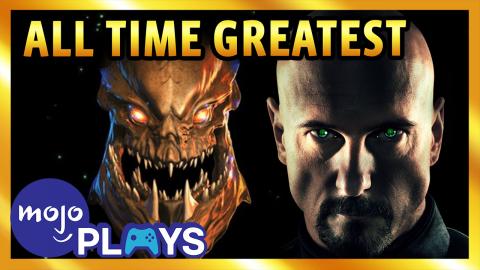The Best Real Time Strategy Game of All Time

Real-time strategy games and PCs go together like bread and butter, and it’s been that way for a long time. Their lineage can be traced all the way back to games like Utopia or Stonkers that introduced real-time decision making to the strategy genre way back in the 1980s, but RTS games as we know them today really announced their arrival with the seminal Dune II: The Building of a Dynasty. This influential title established the core gameplay elements that would be built up and innovated on for years to come by popularizing now staple features like resource collection and the individual micro-management of units. This seemed to have sparked the creativity of developers around the world, because from there the formula was taken in both fantasy and sci-fi directions with games like Total Annihilation or Warcraft: Orcs & Humans, and yet more than twenty years later one title stands above them all: StarCraft. At face value, the game doesn’t do anything dramatically different than its predecessors, and yet it became an international phenomenon that sold over ten million copies, helped launch the genre into new heights of popularity and is still being played competitively today. So what’s its secret?
Applying seemingly everything they learned from their prior attempts at the genre, Blizzard pulled out all the stops in making their 1998 marquee release stand out from the crowd. Right from the get-go players are drawn into the game with the clean and easy to navigate UI that lays units and buildings out in approachable, logical ways. This interface, while often overlooked, keeps new players from getting lost or confused and does a good job providing all the information they need at a glance, without overwhelming them with details. If you look at a sparse example like Homeworld, you’ll see what we mean. It might be less obtrusive and better for experienced players, but it’s not exactly newbie friendly. StarCraft’s accessibility also carries on in the way that units are all clearly differentiated. Watching Zerglings or Hydralisks make their way across the map and respond vocally to each click of the mouse gives each unit an identity to help them stand out from one another. Combine this with the different attack animations, and even hectic battles are easy to scan, assess, and respond to because things can quickly and easily be told apart.
Speaking of units, they’re probably one of the most iconic aspects of the game, and for good reason. Everyone knows about Battlecruisers and Carriers, but what about Marines? Even the little guys with their stimpacks have their time in the spotlight thanks to their versatility, and that’s the key. In contrast to games like Age of Mythology, StarCraft doesn’t have any game-breaking units like Titans, and therefore no clutch to rely on to carry you through a particularly tough fight. This results not only in every unit potentially playing pivotal roles in your armies but also in an incredibly balanced game. Each of the three asymmetrically designed races and their units might be better in specific circumstances, but none are terrible or blatantly broken. Case in point: Zerglings. They’re one of the cheapest units, but can also quickly scale up into the late game with just a little bit of TLC and the Adrenal Glands upgrade. Regardless of army composition, skilled players can adapt to their opponent and find routes to victory by maximizing the strength and diversity of their armies.
This leads us to probably our most important point: the skill component. With mouse selection that’s capped to just 12 units, multiple hotkeys, control groups, and commands to remember and execute, and individual units to micro around the enemy, the skill ceiling to this game seemingly has no end. It’s extremely daunting, and it discourages far too many players from playing the game because they think they need to be perfect, but that’s not the case at all. When you start to examine things like Dragoon or Scourge pathfinding, you’ll realize that it’s impossible to play a perfect game because the AI is just too dumb. Mistakes are always going to happen, even to guys like Flash. The difference is that the great players consistently work on minimizing their mistakes in small, incremental steps towards improvement. StarCraft requires that you embrace your mistakes and learn from them. There’s no luck and no RNG. It’s all about snap decision making, execution, and crisis management, and it all comes with experience.
But let’s say you’re tired of striving for improvement. Do you shut down Battle.net for the night and load up another game to relax? You don’t have to! The single player campaign is a sprawling space opera with a great story that takes itself seriously rather than relying on gimmicks like full motion video and has the same great gameplay with none of the pressures of perfection.
Unfortunately, the RTS genre is not as popular as it used to be. MOBAs, FPSs, and Battle Royale games are some of the newest trends that swept PC gaming over the past decade, and it might just be because StarCraft seemingly perfected the genre and limited innovation. Many titles came after it, but none could match its excellence. Some had a few of the features that made Blizzard’s title great, and a few even had many, but only StarCraft had them all, and that’s the reason why it won’t be going away any time soon.
Sign in
to access this feature